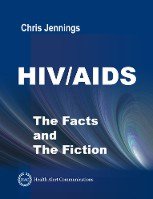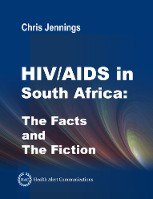In this brief teaser video, Chris Jennings describes how HIV/AIDS migrated from New York City to Copenhagen, Denmark in 1980. The first step in the spread of HIV/AIDS from the United States, the epicenter of the HIV/AIDS epidemic, throughout the world.
This brief video is an excerpt from Chris Jennings full lecture: New York City – The Epicenter of the HIV/AIDS Epidemic, which summarizes the first portion of Chris Jennings seminal book, HIV/AIDS – The Facts and The Fiction. The full lecture, New York City – The Epicenter of the HIV/AIDS Epidemic, will be broadcast as a Facebook Premier Event on November 3, 2020. Sign up for the Event here.
Date: November 3, 2020
Time: 1 PM EST (18:00 GMT)
Web Link: To Be Announced
Click Here to Join the Facebook Event
Click Here to Subscribe to our Newsletter for Updates Continue reading
In this brief teaser video, Chris Jennings describes how Bermuda and Bahamas had the highest HIV/AIDS rate in the world at the beginning of the HIV/AIDS epidemic. Also, notably, HIV/AIDS was absent from Cuba because no Americans were allowed to enter Cuba.
This brief video is an excerpt from Chris Jennings full lecture: New York City – The Epicenter of the HIV/AIDS Epidemic, which summarizes the first portion of Chris Jennings seminal book, HIV/AIDS – The Facts and The Fiction. The full lecture, New York City – The Epicenter of the HIV/AIDS Epidemic, will be broadcast as a Facebook Premier Event on November 3, 2020. Sign up for the Event here.
Date: November 3, 2020
Time: 1 PM EST (18:00 GMT)
Web Link: To Be Announced
Click Here to Join the Facebook Event
Click Here to Subscribe to our Newsletter for Updates
HIV/AIDS Migrates from New York City to Johannesburg
The first Africans diagnosed with AIDS were two white gay men who lived in the Johannesburg, South Africa [1].
“During 1981, large numbers of cases of two hitherto uncommon diseases, Kaposi’s sarcoma and Pneumocystis carinii pneumonitis, occurred among male homosexuals in the USA. We report 2 cases in South African male homosexuals, both of whom had visited the USA before the development of their disease [1]. ”
They were two gay white men; both air stewards who flew the Johannesburg to New York City route. The first man had traveled regularly to the USA in his work, and had lived in New York City for 5 years. He presented in early 1982. The second patient was a sexual partner of the first man, and had visited the USA 3 to 4 months prior to the onset of illness [1, 2]. Continue reading
 The U.S. HIV/AIDS Travel Ban Shocked the World
The U.S. HIV/AIDS Travel Ban Shocked the World
The HIV/AIDS Travel Ban forbidding foreigners with HIV from entering the United States became effective in June 1987. The HIV/AIDS Travel Ban was a consequence of an action by the United States Department of Health and Human Services (DHHS). This agency added AIDS to the list of dangerous contagious diseases. Thereby, immediately, any foreigner with AIDS was “ineligible to receive a visa and therefore are excluded from admission into the United States [1].” This action shocked aware and concerned peoples worldwide.
Eventually, the U.S. HIV/AIDS Travel Ban was rescinded in 2010 [1].
The U.S. HIV/AIDS Travel Ban was Not the First
Liberia and Saudi Arabia both had travel bans by 1986, a year before the US travel was enacted.
Both Liberia (West Africa) and Saudi Arabia had travel bans restricting U.S. citizens from entering these countries without providing certification of an AIDS-free status [2]. Continue reading
 “AIDS is from America”
“AIDS is from America”
Paris. Circa 1986. I was sitting in a hotel lobby, talking with some European and African people about AIDS. The Africans said everyone in Africa thinks AIDS comes from Europe. The Europeans said people in Europe think AIDS is from America. I said that most Americans think AIDS comes from Africa. Everyone laughed.
The opinion of the Europeans and Africans was supported by much of the medical literature before 1985. Essentially, before the African monkey narrative took hold, the United States was recognized as the epicenter of the AIDS epidemic. The perspective that AIDS is from America was portrayed throughout the medical literature of the time. Continue reading




